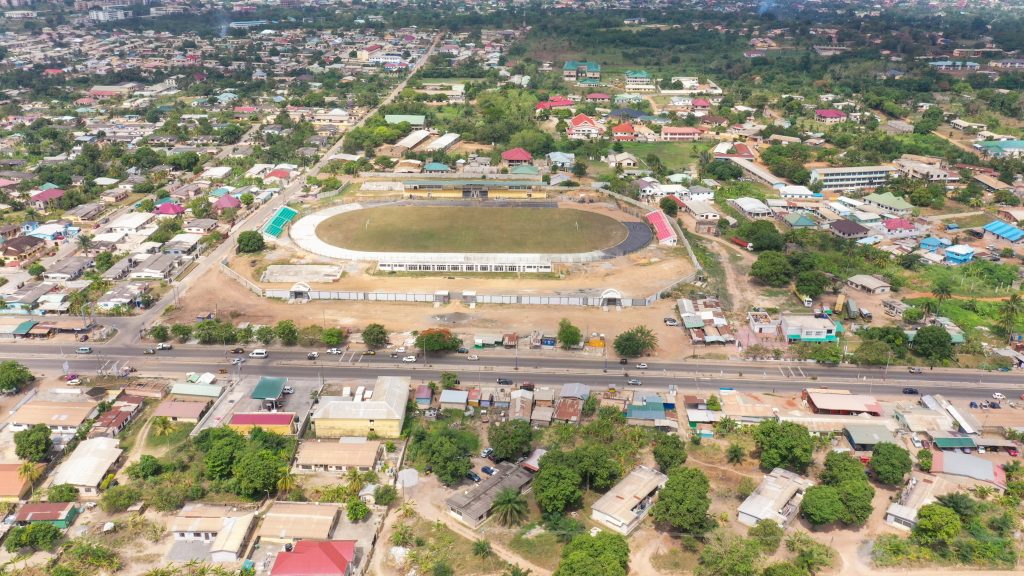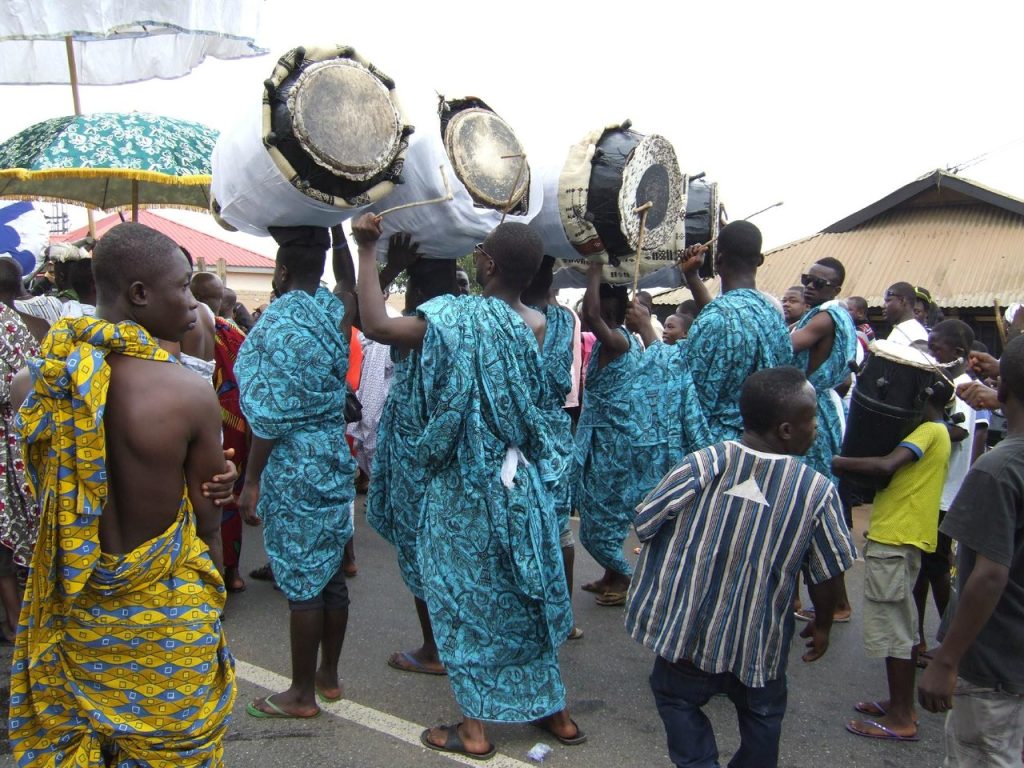Experience Koforidua and Ghana Biggest Market – The Kejetia Market
Located in the heart of Kumasi, Ghana’s second-largest city, Kejetia Market stands as a bustling and vibrant epicenter of trade and cultural exchange. Spanning an expansive area, this market is not only a commercial hub but also a microcosm of daily life, where the rich tapestry of Ghanaian culture unfolds. Join us on a virtual tour of Kejetia Market, where the sights, sounds, and diverse array of goods create an immersive experience like no other.
Location and Historical Significance:
Kejetia Market, officially known as the Kejetia/Central Market, is situated in the central business district of Kumasi. Its origins can be traced back to the early 20th century, and it has since evolved into one of the largest markets in West Africa. The name “Kejetia” is derived from the Akan language, meaning “the hair has been combed,” symbolizing order and organization.
Market Layout and Structure:
The market’s layout is a labyrinthine network of stalls, alleys, and sections, each dedicated to specific types of goods. From textiles and crafts to fresh produce and spices, Kejetia Market offers a vast array of products. The market is organized into zones, with each section catering to different needs, creating a semblance of order within its bustling chaos.
Diverse Goods and Commodities:
- Textiles and Clothing: Kejetia Market is renowned for its vibrant textile section, where an array of colorful fabrics, traditional Kente cloth, and contemporary garments are on display. Tailors and seamstresses in the market offer custom clothing services, adding to the dynamic fashion scene.
- Fresh Produce: The market hosts a lively fresh produce section, where farmers from the surrounding regions sell an abundance of fruits, vegetables, and herbs. The vibrant colors and aromas create a sensory feast for visitors.
- Crafts and Artisanal Goods: Artisans showcase their craftsmanship, offering handmade goods such as beadwork, carvings, and traditional artifacts. This section reflects the rich artistic heritage of Ghana.
- Spices and Foodstuffs: Aromatic spices, herbs, and a variety of foodstuffs are available, contributing to the market’s role as a culinary haven.
Cultural Intersection:
Kejetia Market is more than a commercial space; it serves as a cultural crossroads. Visitors encounter a melting pot of Ghana’s diverse ethnic groups, each contributing to the cultural mosaic. The market is a place of linguistic diversity, with traders and buyers conversing in various Ghanaian languages and dialects.

Daily Life and Dynamics:
Navigating through Kejetia Market reveals the rhythm of daily life in Kumasi. From the animated negotiations between buyers and sellers to the comings and goings of porters carrying goods, the market exudes an energy that encapsulates the spirit of urban Ghana.
Challenges and Renewal:
Over the years, Kejetia Market has faced challenges such as congestion and inadequate infrastructure. However, a significant redevelopment project, the Kejetia Redevelopment Project, was undertaken to modernize the market. The project, completed in recent years, has transformed Kejetia into a more organized and modern trading space while preserving its cultural essence.
Visitor Experience:
Visitors to Kejetia Market are in for a sensory adventure:
- Exploration: Wander through the market’s labyrinthine alleys, discovering hidden gems and interacting with vendors.
- Shopping: Whether looking for traditional textiles, spices, or handmade crafts, Kejetia offers a plethora of shopping opportunities.
- Culinary Delights: Sample local dishes and street food, experiencing the flavors of Ghanaian cuisine.
- Cultural Immersion: Engage with traders and locals, gaining insights into the cultural nuances of Kumasi.
Kejetia Market: A Microcosm of Kumasi’s Soul:
Kejetia Market transcends its role as a commercial entity; it embodies the soul of Kumasi. As a dynamic space where tradition meets modernity, and commerce converges with culture, Kejetia reflects the resilience and vitality of urban life in Ghana. Whether you’re a curious traveler, a passionate shopper, or a cultural enthusiast, Kejetia Market invites you to partake in an authentic Ghanaian experience where every corner tells a story and every transaction is a cultural exchange.
Experience Koforidua – Eastern Region of Ghana and things to note about the place
Koforidua, a city nestled in the Eastern region of Ghana, is renowned for its captivating history and natural beauty. Situated just 83 kilometers north of Accra, this locale is embraced by serene mountains and hills, holding a special place in the hearts of Ghanaians.
Delving into the roots of Koforidua unveils a fascinating story that intertwines with the legend of the mahogany tree. In 1875, migrants, seeking a fresh start due to the aftermath of the Sagrenti War in Kumasi, arrived from Juaben and other Ashanti regions. They received a warm welcome from the Akyem people, leading to the establishment of a settlement known as Juaben, with Koforidua being a part of it. To avoid confusion, the entire district is now called New Juaben, though colloquially referred to as Koftown or Kof-City.
The tale of the Koforidua mahogany tree begins as settlers, forming small villages, witnessed a man named Kofi Ofori planting a mahogany sapling in an uninhabited area. Over time, the tree grew into a sprawling landmark, offering shade and becoming a gathering spot for locals. Farmers, weary from toiling in the fields, would pause under its branches to catch their breath and exchange news.

This mahogany tree, known as Kofi Ofori dua, meaning Kofi Ofori’s tree, became synonymous with the area. It served as a meeting point for both scheduled and impromptu gatherings, evolving into a reference point for directions. As the settlement grew into a trade hub, the name Koforidua emerged, becoming firmly established by the time of colonial administration.
By the 1950s, Koforidua had become a bustling trading center, attracting migrants from across the country. The completion of the Accra-Kumasi Railway line in 1923 played a pivotal role in catalyzing economic activities. The town experienced growth in various aspects, including the introduction of regular wage labor and farm mortgaging.
The term “Koforidua flowers” gained popularity, referring to women who migrated to the town for trading purposes. The town’s commercial prosperity attracted men seeking both business opportunities and companionship. This influx led to a vibrant market for live band music, as men took their women out for leisure.

Koforidua, with its dynamic history, also boasts tourist attractions such as Boti Falls and the sacred Obuor Tabiri mountain. The annual ‘Akwantukese’ festival, celebrating the migration of Juaben people to Koforidua, draws visitors with its week-long festivities, including traditional rites, sports events, and music performances.
Some of the most popular restaurants in Koforidua include:

We recommend staying at one of the most popular hotels in Koforidua, which include:
- Eastern Premier Hotel
- Tonyx Hotel Suites & Spa
- Bedtime Hotel
- Capital View Hotel
- Embassy and Diplomats Hotel
In exploring the captivating story of Koforidua and the mahogany tree, one not only discovers the city’s historical roots but also encounters the vibrancy and cultural richness that define this cherished Ghanaian locale.
